Music
Trailers
DailyVideos
India
Pakistan
Afghanistan
Bangladesh
Srilanka
Nepal
Thailand
StockMarket
Business
Technology
Startup
Trending Videos
Coupons
Football
Search
Download App in Playstore
Download App
Best Collections
Technology
After two years of work, the wrapper comes off the giant glass cube this week, as AppleFifth Avenue flagship opens to the public this Friday. The big reveal coincides with the companylatest releases, including new iPhones and an Apple Watch — an appropriately grandiose homecoming for new gear.
This morning, the company offered a sneak preview to select media, ourselves included. Apple pulled back the curtain as a handful of curious onlookers stood by on the sidewalk. The cube itself appears largely unchanged, aside from a new shine. The colorful concealer wrap was, sadly, just temporary.

But then, why mess with whatbecome a New York City landmark in its decade and a half of existence? The store is positioned in one of the most highly trafficked corners of the city, at the southeast corner of Central Park, directly across from the Plaza (and perhaps less attractively to some, two blocks north of a certain presidential tower). Until a few years back, it fittingly shared the square with the iconic FAO Schwarz.
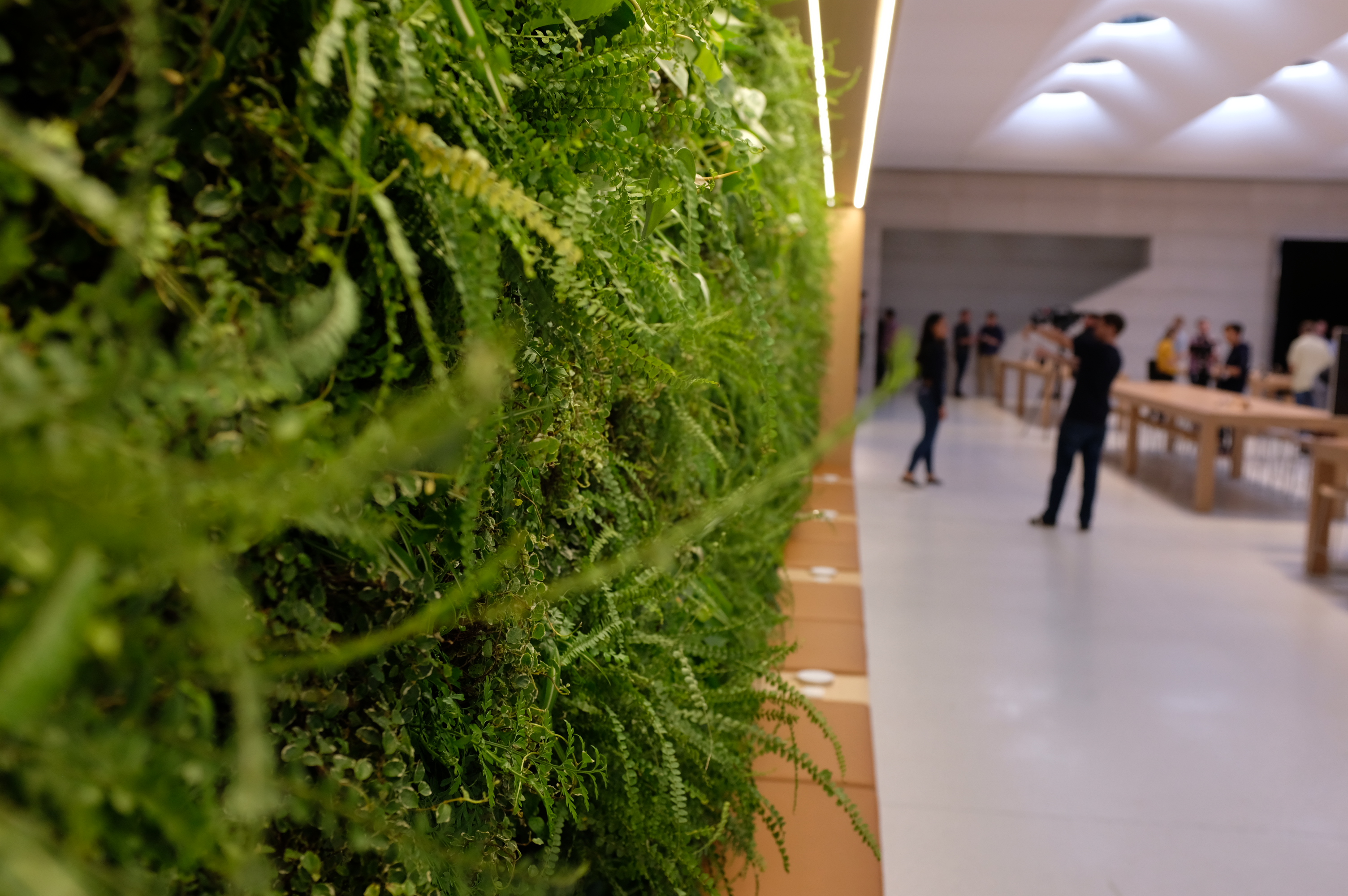
Now, however, Applecompletely taken over the space. The plaza surrounding the cube has changed a good deal to accommodate a new lighting system that leverages a combination of sunlight and the power of 500,000 LEDs. More on that here.
Underground, the store occupies the full area of the plaza, as well. That extra space allows for a larger Genius Bar that stretches the length of the store and a special HomePod listening area sealed behind glass that brings to mind the once-popular world of hi-fi stereo stores.
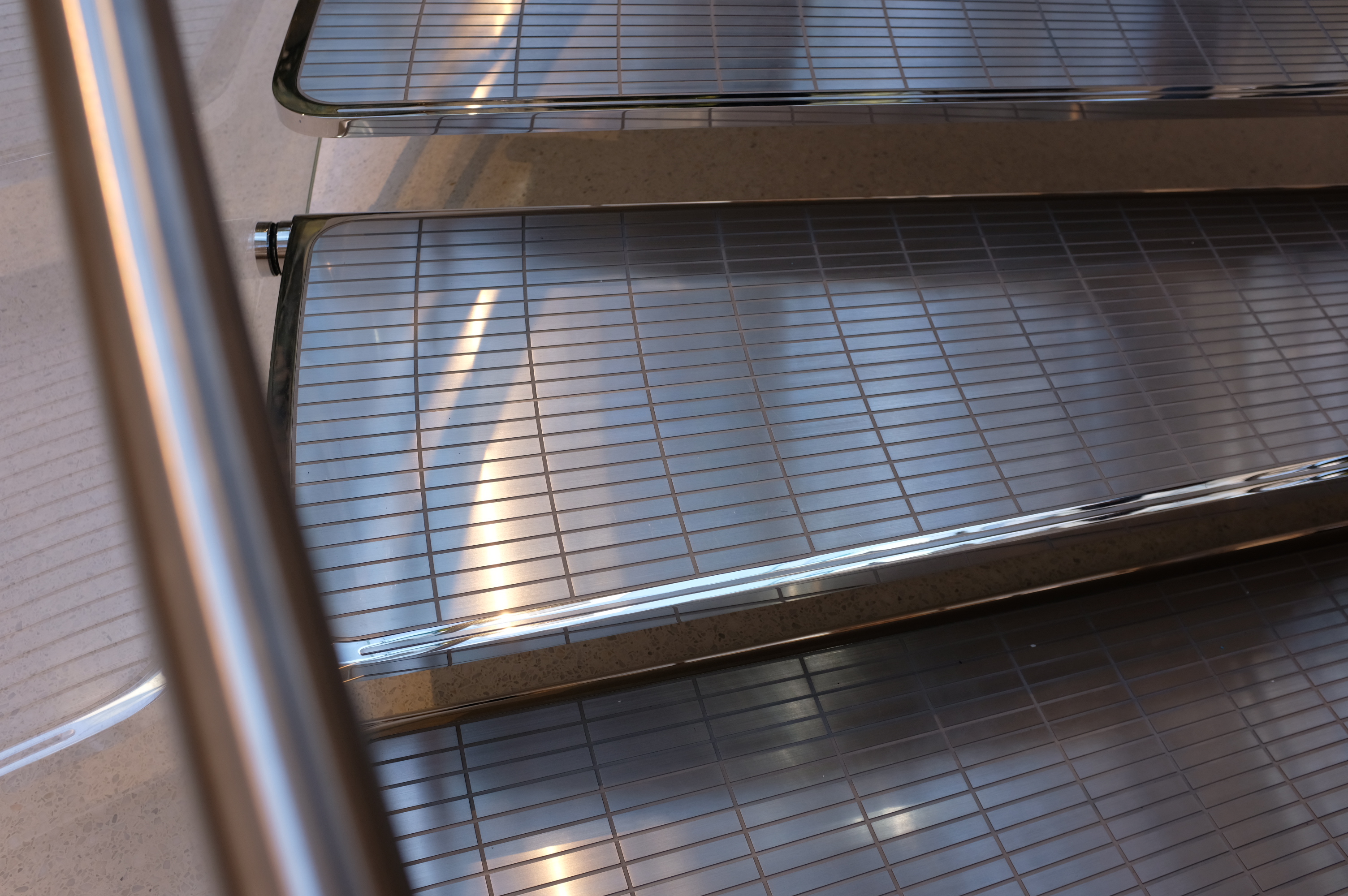
Most surprising, the signature spiral staircase is no longer purely glass. The steps now have a stainless steel covering — for safety purposes, one assumes. One attendee this morning confided to me that he nearly bit it walking down the steps the first time he visited the store. As cool as the glass looked, it always felt like a disaster waiting to happen whenever it rained.
As promised, the lighting system was employed to great effect. Ita cool combination, the sunlight streaming through the fogged portholes along with the lighting rings around them. Check the reflection below:
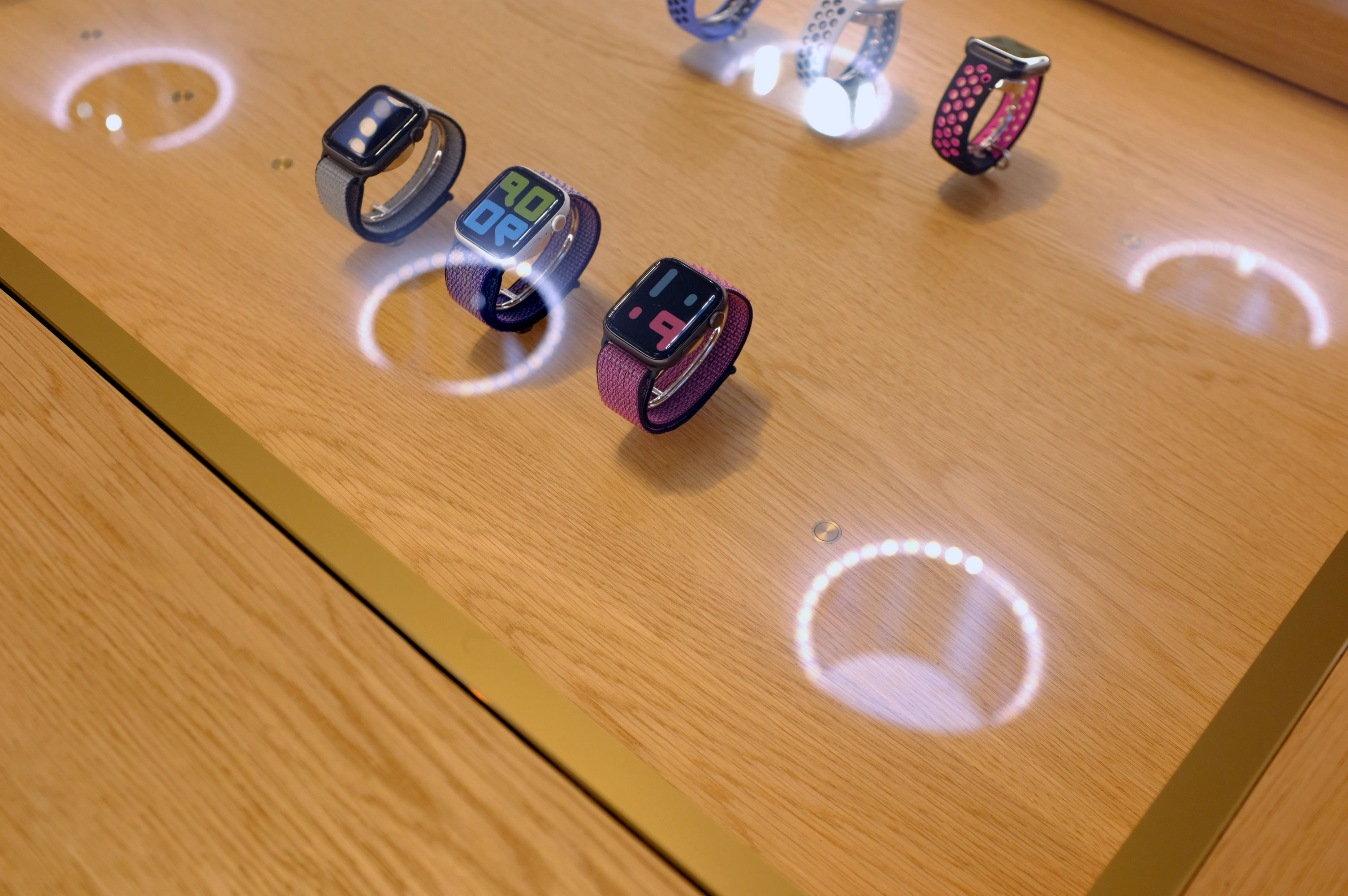
The sunlight, in turn, is used by eight full-sized trees divided in two rows on the east and west sides of the store, along with a long, live green wall to the east (near the AirPods, FWIW). Italso apparently the coolest during sunrise and sunset when it takes on a glowing effect.
The new store opens to public this Friday at 8AM.
[gallery ids="1883936,1883934,1883933,1883932,1883931,1883930,1883929,1883928,1883927,1883926,1883925,1883924,1883923,1883922,1883920,1883918,1883917,1883916"]
- Details
- Category: Technology
Read more: Inside Apple’s reimagined Fifth Ave. store
Write comment (97 Comments)Apple released iOS 13, the new major version of iOS. This isn&t a groundbreaking release that is going to change the way you use your phone. But Apple has done some tremendous work across the board to improve some low-level features, as well as most Apple apps.
In many ways, iOS 13 feels like a quality-of-life update. In developer lingo, quality-of-life updates are all about refining things that already work. It helps you save a second here, do something more easily there.
I&m going to talk about many of those small refinements, but I want to focus on two things that are going to matter more than the rest — Dark Mode and Applefocus on privacy.
Dark Mode is here
At some point, smartphone manufacturers started making bigger phones. And if you don&t want to become blind at night, Dark Mode is a must. It took a while, but it is finally here and it looks great.
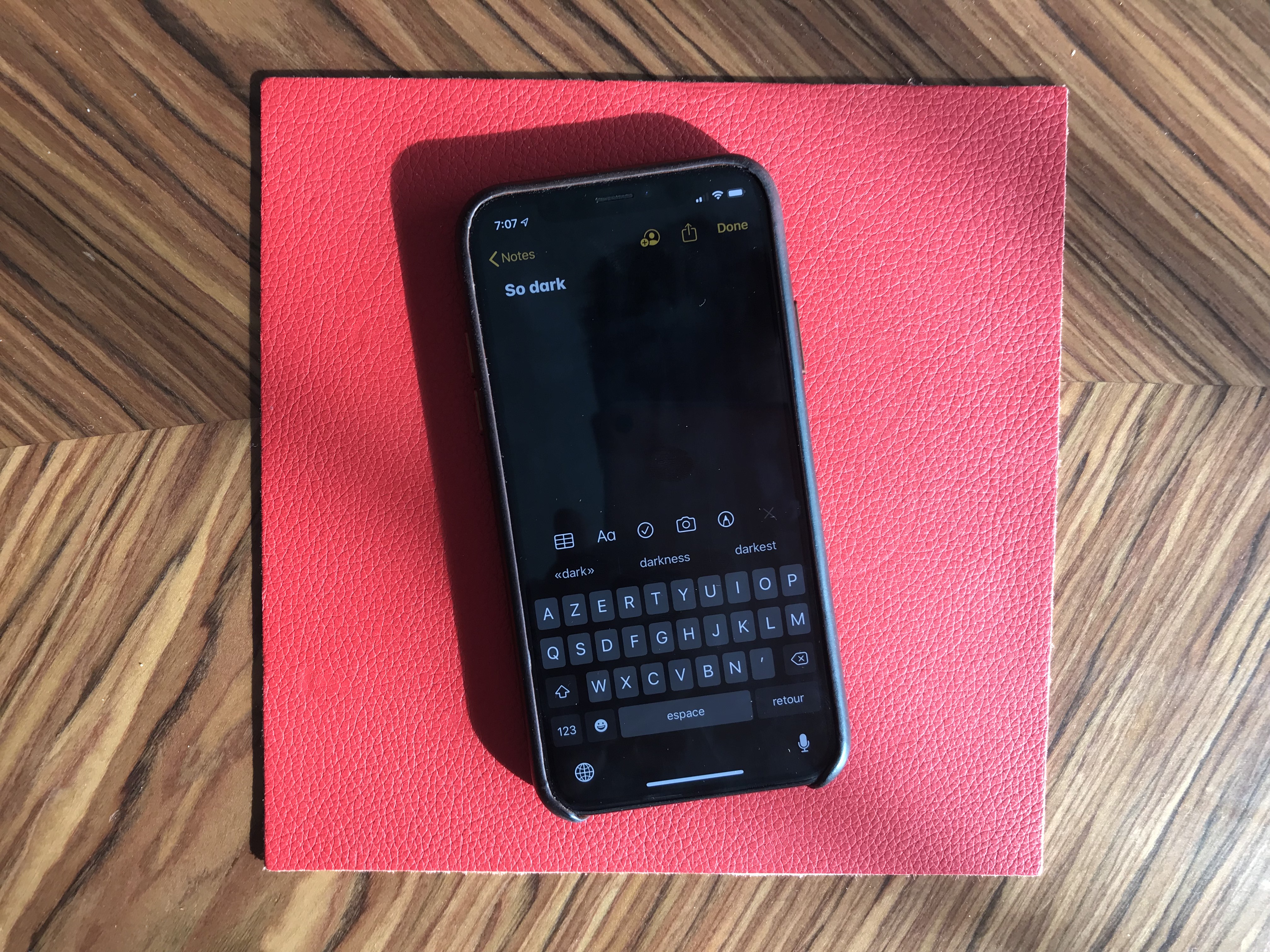
Dark Mode on iOS 13 is a system-wide trigger. You can activate it from the Settings app or by opening the Control Center panel and long-pressing on the brightness indicator. And it completely transforms the look and feel of your iPhone.
While some third-party apps have been updated, many developers still have to release updates to make their apps work with this new setting. I hope in six months, you&ll be able to turn on Dark Mode and jump from one app to another without any white interface.
I recommend turning on the automated mode in the settings. iOS uses your current location to time the change with sunset and sunrise — your iPhone goes dark at night and lights up in the morning.
Dark Mode doesn&t just affect apps. Widgets, notifications and other buttons in the user interface become dark. Apple uses pure black, which looks great on OLED displays. And you can optionally dim your custom wallpapers at night.
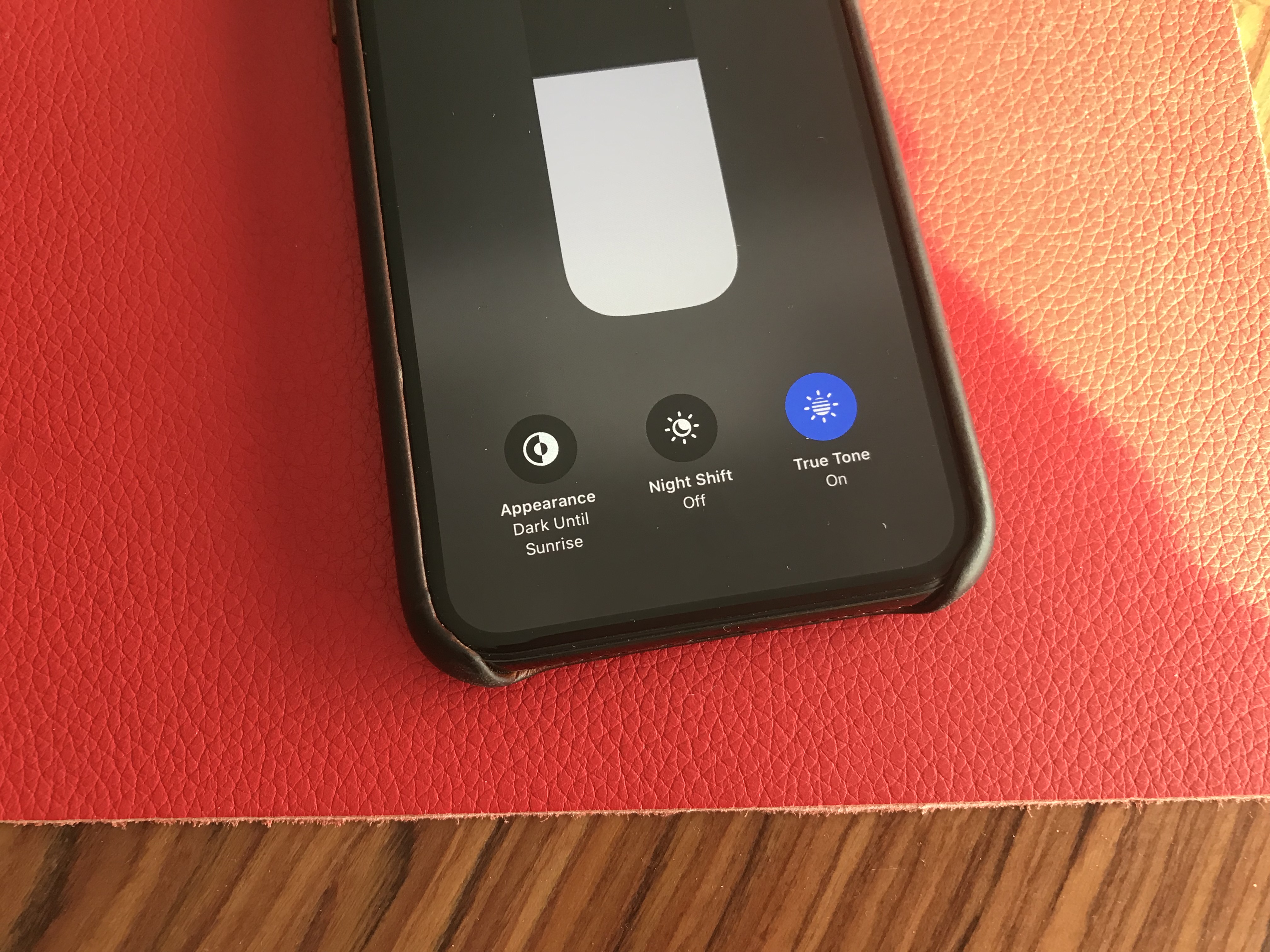
The privacy hammer
Many geeks have tried iOS 13 over the summer. But itgoing to be a completely different story when tens of millions of people download it this fall. As iOS 13 brings some much-needed changes on the privacy front, itgoing to be nasty for some companies.
Apple is adding more ways to control your personal information. If an app needs your location for something, you can now grant access to your location just once. The app will have to ask for your permission the next time.
Similarly, iOS 13 can tell you when an app has been silently tracking your location in the background with a map of those data points.
Apple is shaming app developers directly by saying &This app has used 40 locations in the background in the past 2 days& and showing you a map. You can turn off location tracking directly in the popup. Facebook is already freaking out and wrote a blog post last week to tell you that it cares about your privacy.
Also, iOS 13 blocks Bluetooth scanning by default in all apps. Many apps scan for nearby Bluetooth accessories and compare that with a database of Bluetooth devices around the world. In other words, ita way to get your location even if you&re not sharing your location with this app.
You now get a standard permission popup for apps that actually need to scan for Bluetooth devices. Some apps actually need Bluetooth to communicate with connected devices, initiate peer-to-peer payments with nearby users, etc.
But the vast majority of them have been abusing Bluetooth scanning. To be clear, you can disable Bluetooth scanning and still use Bluetooth headphones. Audio will still be routed to your headphones just fine.
I hope many app developers will review the third-party SDKs that they use. Many ad-supported apps embed code from adtech companies. But they don&t always note that those SDKs are hostile to your privacy.

Finally, Apple is adding &Sign in with Apple.& It is an alternative to &Sign in with Google& or &Sign in with Facebook.& Customers can choose whether or not to share their email address and developers get little personal data. Itgoing to be interesting to see if it takes off.
Low-level improvements
There are a few changes at the operating system level. First, in addition to optimizations, animations have been slightly sped up. Swiping, opening and closing apps feels faster.
Second, the keyboard now supports swipe-to-type. If you&ve used Android phones or third-party keyboards in the past, you already know how it works. You can move your finger across the display from one letter to another without lifting it. It feels like magic.
Third, the share sheet has been updated. It is now separated in three areas: a top row with suggested contacts to send photos, links and more depending on your most important contacts.
Under that row of contacts, you get the usual row of app icons to open something in another app. If you scroll down, you access a long list of actions that vary from one app to another.
When it comes to automation, Shortcuts is installed by default with iOS 13. Many people are going to discover Shortcuts for the first time by opening the app. Voice-activated Siri Shortcuts are now available in the Shortcuts app, as well.
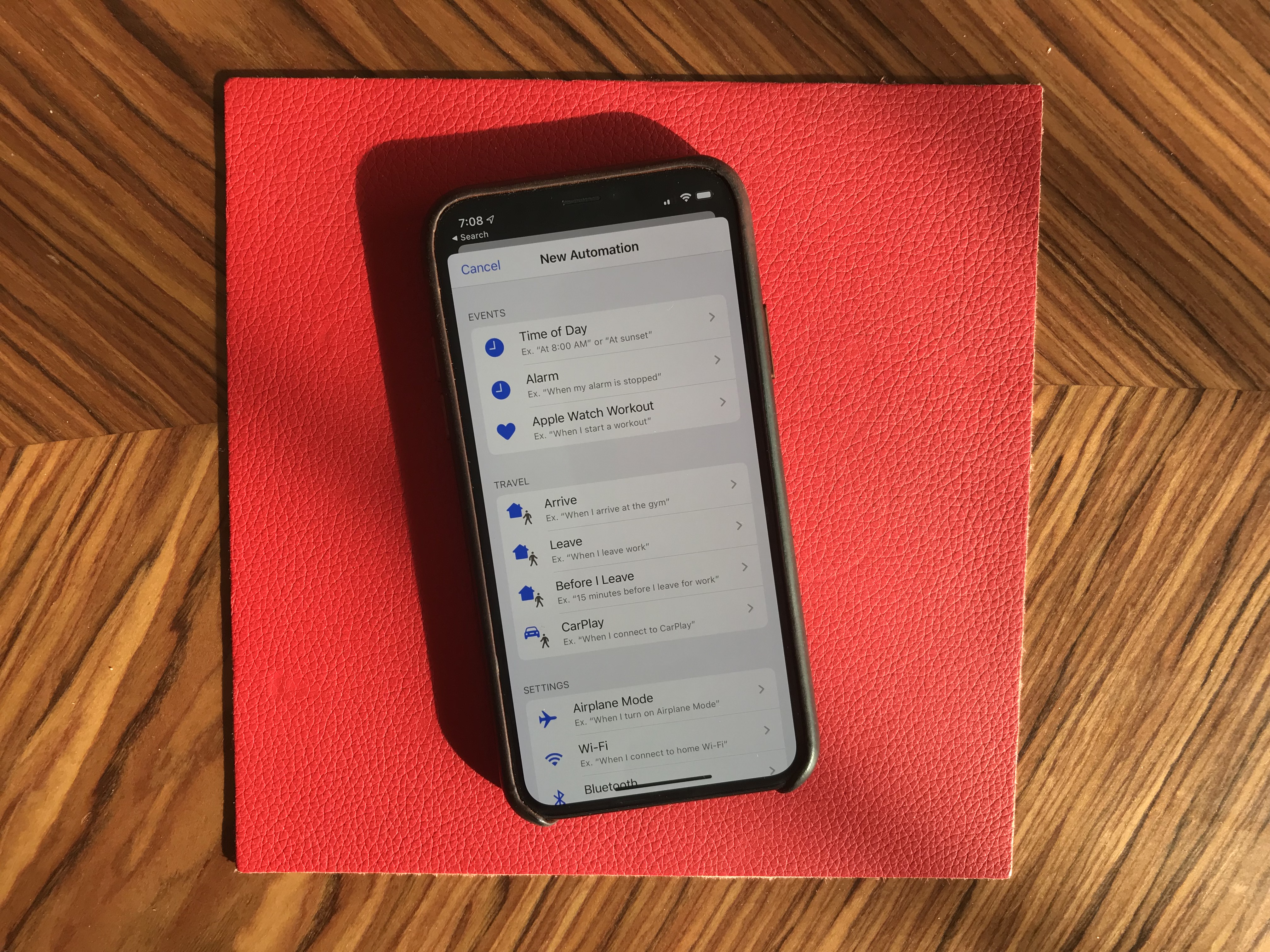
More interestingly, you can now create automated triggers to launch a shortcut. For instance, you can create scenarios related to CarPlay, a location or even a cheap NFC tag. Here are some examples:
- Launch a music playlist when I connect my phone to CarPlay or to my car using Bluetooth.
- Dim my screen and turn on low-power mode when I activate airplane mode.
- Turn off my Philips Hue lights when I put my phone on an NFC sticker on my nightstand.
New app features
I&m going to go through some of the major changes in Appleapps.
Apple Arcade is here. You have to download iOS 13 to access it. I&ll let you read our first impressions in our separate article.
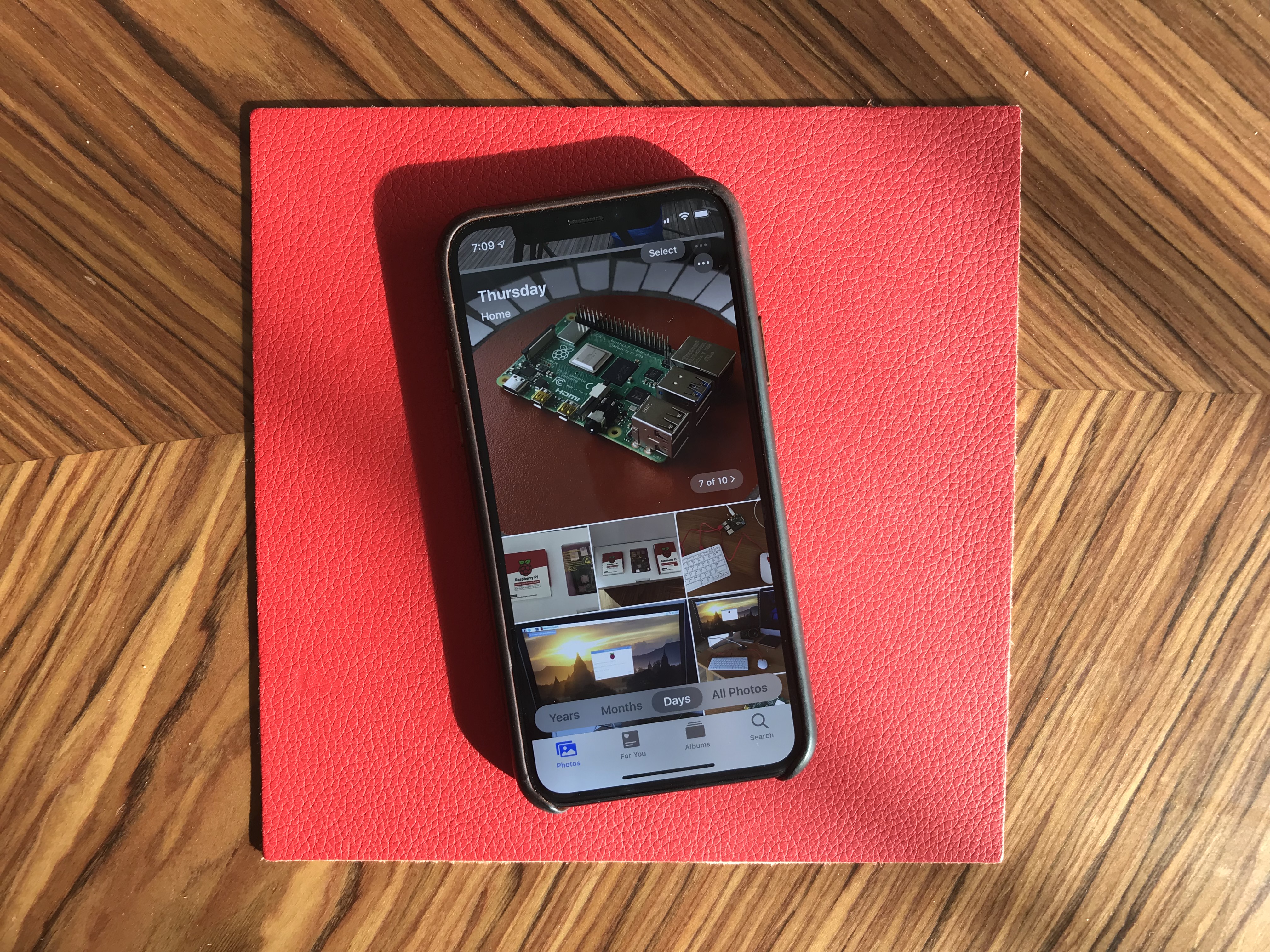
Photos has received some of the biggest improvements. The main tab has been completely redesigned. You now get four sub-tabs that let you see a curated photo library.
In addition to ‘All Photos,& you can tap on ‘Years& to jump straight to a specific year, and ‘Months& to see some smart albums based on dates and locations. You can then open those events. It&ll jump to the ‘Days& tab and show you the best photos.
I&m not sure I like the wording of those sub-tabs, but itdefinitely a lot more efficient if you&re looking for an old photo from a few years back.
Photo editing is also much better on iOS 13. It feels like you can do pretty much all the basic editing you&d do with a third-party app.
Maps is an interesting app. While Apple has been working on improved mapping data, itgoing to be hard to notice if you don&t live in California. But Look Around, a feature that works pretty much like Google Street View, is quite impressive. This isn&t just 360 photo shots — those are 3D representations of streets with foregrounds and backgrounds. I&d recommend finding a street in San Francisco and opening Look Around.
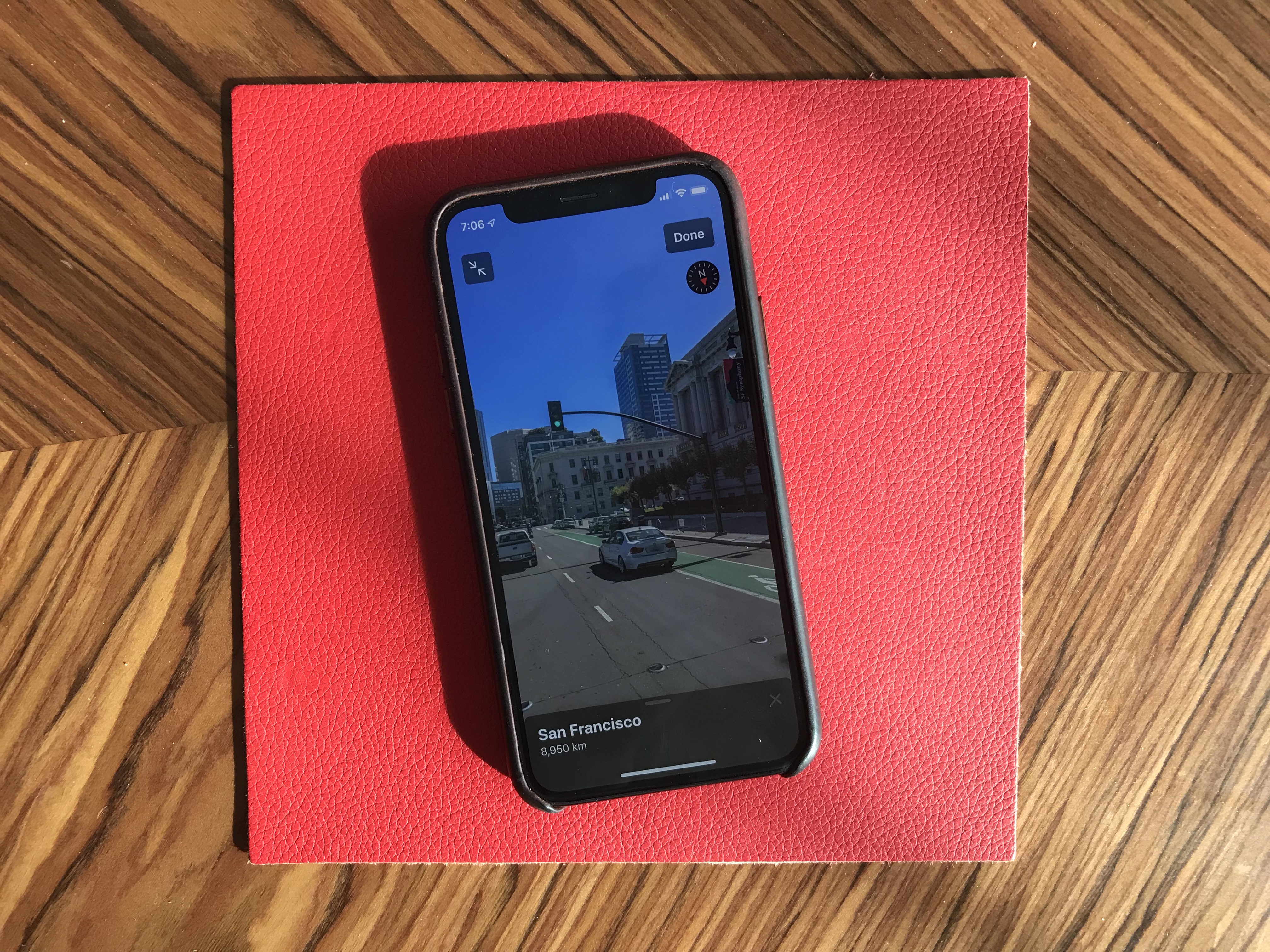
Messages now works a bit more like WhatsApp. By that I mean you can pick a profile name and picture and share those with your friends and family. Apple also tells you to use Memoji, but you can pick any photo. Search in Messages is also much better.
Health has been slightly redesigned. But the big addition is that you can track your menstrual cycles in the Health app. You don&t need to install any third-party app.
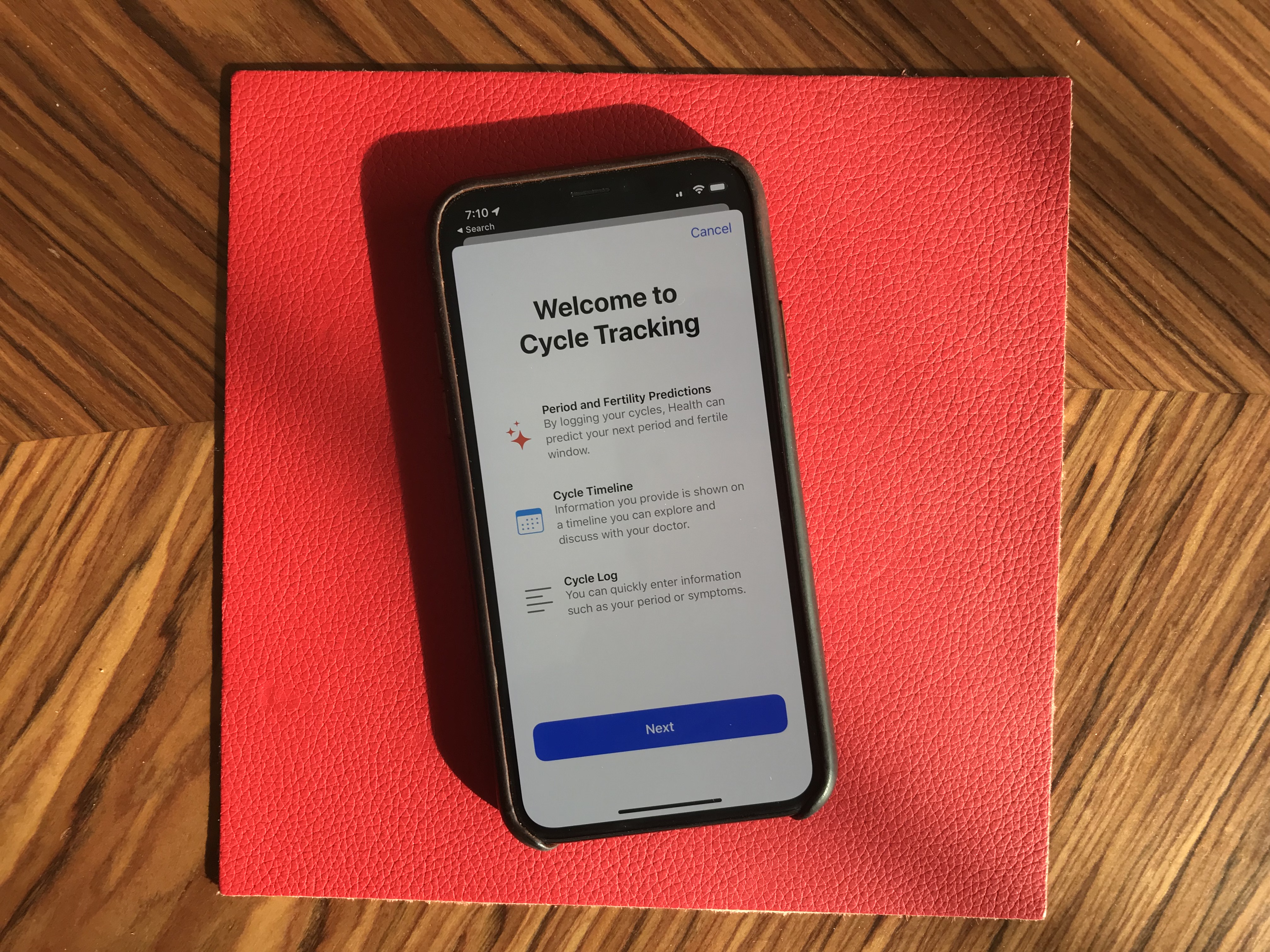
Reminders has gained some new features. Therea quick toolbar to add times, dates, locations and more. You can indent items, create smart lists and more. To-do apps are highly personal, but I&m sure some people will like it.
Find My is the new name for Find My Phone and Find My Friends. Maybe you&ll be able to find your objects soon when Apple launches Tile-like trackers?
Mail, Notes and Safari received small improvements, such as rich-text editing in Mail, a gallery view in Notes anda new site settings popup in Safari to request the desktop site, disable a content blocker or enable reader view.
Files works with Samba file servers and you can zip/unzip files directly in the app — no shortcut needed. You can also install custom fonts.
As you can see, there are a lot of big and tiny improvements across the board with iOS 13. Sure, this version feels buggy at times. Itan ambitious update, with Apple telling everyone that they&re not ready to slow down the pace of iOS releases. And Apple is making some welcome progress on the privacy front.
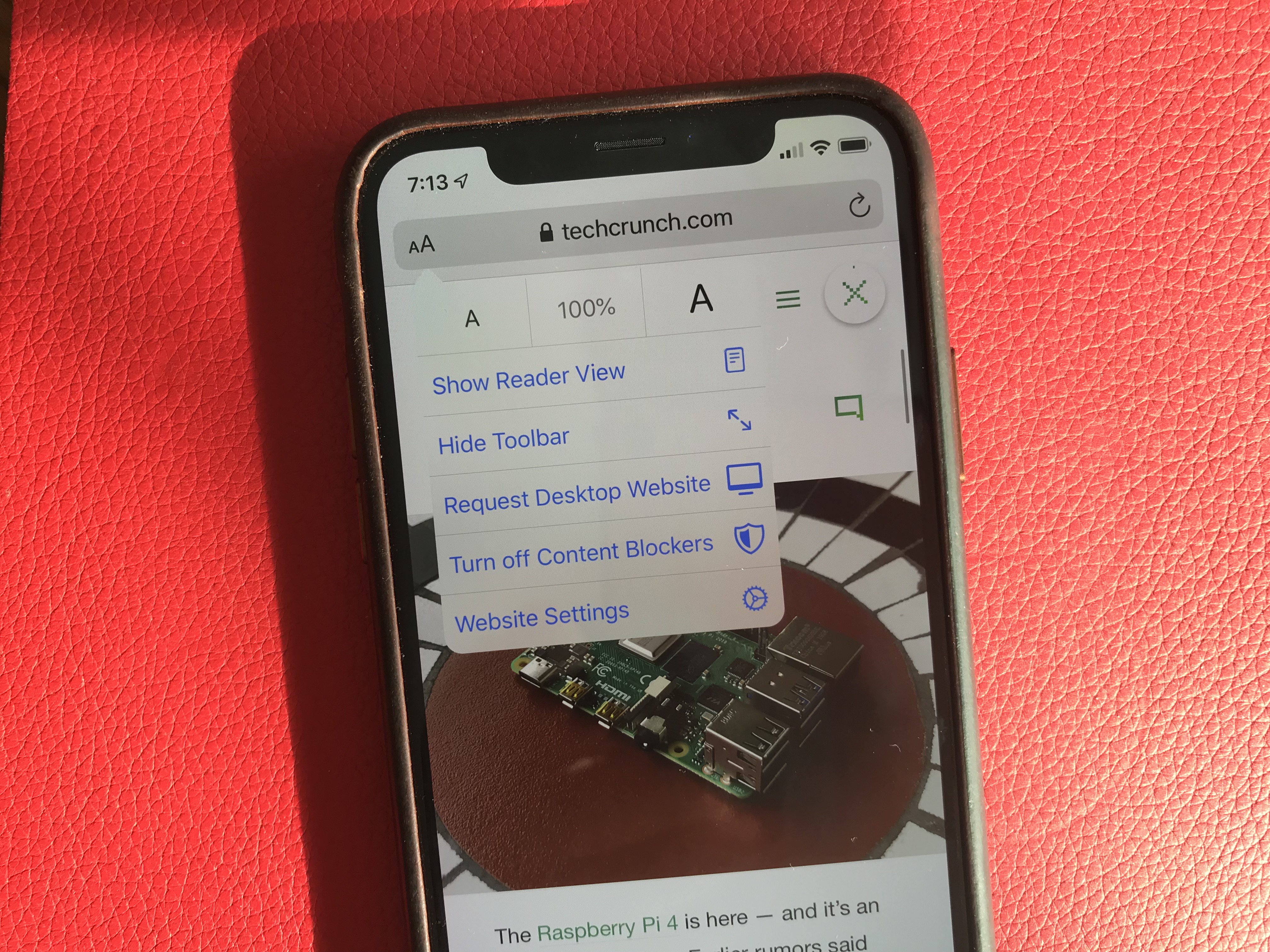
- Details
- Category: Technology
Read more: iOS 13 pushes the envelope across the board
Write comment (90 Comments)After a week of launching new services to bring payments giant Stripe into the areas of lending and credit, the company is announcing another big step forward to fuel its growth: itraising another $250 million in funding at a pre-money valuation of $35 billion, money to fuel more international expansion, launching more products and targeting larger enterprise-sized businesses.
This is a huge jump in valuation for the company: Stripe was valued at $22.5 billion earlier this year when it raised $100 million.
The startup said that General Catalyst, Andreessen Horowitz and Sequoia are all in the round already. We&ve also heard that SoftBank had been considering an investment. &It was a big miss when SoftBank didn&t invest two years ago,& one source close to the VC said to TechCrunch. But we&ve confirmed also with John Collison — the president of Stripe who co-founded the company with his brother Patrick (who is the CEO) — that SoftBank is not in this round.
Nor will there be any corporate strategics involved in this round. Of note, Collison today confirmed that the bank providing the financial backing for its new cash advance and corporate card services is Celtic Bank, based in Salt Lake City. But the bank is not taking a strategic investment in the company as part of that deal.
Although the round is not yet closed, Collison said the $250 million size is unlikely to change. The round should close in the next several weeks, he added.
Stripe has long been reluctant to talk about when it might consider going public, and this round will put that prospect off even further. &We are still very happy as a private company,& Collison said today. &Our emphasis remans on the long-term opportunities.&
Stripe spent the first several years of its life slowly building up its payments business — which primarily consisted of providing an API to e-commerce businesses so that they could easily integrate a payments option in their apps or websites.
But in more recent years, itstarted to accelerate its growth with a significantly larger range of financial services — notably, now it describes its business as a &Global Payments and Treasury Network.& The latest products — cash advances and credit cards — are coming on the heels of other services that include incorporation services, fraud protection and and more.
All this means not only that the company can diversify its own revenues, but it can differentiate itself from (or, in some cases, offer the same services as) its competitors. Others offering similar services to Stripeinclude PayPal and Adeyn on the payments front, but as it adds more services, italso opening new competitive fronts with other rivals, now including Square, Brex and Clearbanc.
While the U.S. remains Stripemain market, especially for new launches, itgetting increasingly global. The company last week expanded its payments out to eight more countries and that is set to expand again to total 40 in the coming months.
The company says it processes &hundreds of billions of dollars a year for millions of businesses worldwide,& although it declines to give specific numbers. Wayfair, Airbnb, Twilio, GitHub and The RealReal are among the kind of &enterprise& customers that it hopes to target more. Indeed, as startups in e-commerce grow into huge businesses, they are turning from being the kinds of small companies that Stripe used to target into the big companies that it now wants to target.
&This comes in the context of the factthat we feel strongly about Striperole in the growing internet economy,& Collison said.
As we have pointed out before, the internet economy, for all its seeming ubiquity, is still a small part of all commerce, which is one reason brick and mortar is likely to be another target for Stripe in the long run, building on the point-of-sale services it already provides — even as the company continues to reap the rewards of its traction in the digital universe.
&Even now, in 2019, less than eight percent of commerce happens online,& said John Collison, president and co-founder of Stripe, in a statement announcing the round. &We&re investing now to build the infrastructure that&ll power internet commerce in 2030 and beyond. If we get it right, we can help the internet fulfill its potential as an engine for global economic progress.&
Updated with comments from John Collison, the co-founder of Stripe
- Details
- Category: Technology
Read more: Payments giant Stripe is raising another $250M at a $35B pre-money valuation
Write comment (96 Comments)Wing, the drone delivery company that started its life within the Google X lab before spinning out into its own thing under the Alphabet umbrella, is prepping for takeoff.
The company announced this morning that itlaunching a test program in Virginia with Walgreens, FedEx and local retailer Sugar Magnolia.
As part of the program, Wing will be able to deliver kids& snacks (goldfish, water, gummy bears and yogurt were mentioned as examples) and over-the-counter meds (like Tylenol or cough drops) from Walgreens, select packages from FedEx Express and sweets and stationary from Sugar Magnolia.
Alas, unless you&re one of the roughly 22,000 people in Christiansburg, Va. and happen to be in a neighborhood they&ve deemed eligible, you&re not going to be able to check it out just yet. Wing says the pilot program is limited to the small Montgomery County town for now as they work with locals to figure out what works and what doesn&t. The company declined to give any sort of timeline for when the program might expand to other parts of the U.S.
So how does it work?
When the customer places an order, one of Wingdelivery drones heads for a pickup location. As Wingdrones are only allowed to takeoff or land in specific locations, pickups and deliveries are handled via a tether, with the drone itself hovering about 20 feet in the air. Once at the pickup location, a tether is lowered and a human operator hooks the package onto the line. The drone winches the package into the air, secures it, and heads for its destination.
Once in flight, Wing says its drone cruises at about 60-70mph, with a range of about six miles each way. Once the drone arrives at the delivery location, the same tether line lowers the package. When the drone detects that the package has reached the ground, the package is released and the drone heads back home. All in all, Wing estimates they can make a delivery within about 10 minutes of a customer finalizing their order.
And if the tether gets stuck on something, or someone tries to grab it and tug it down? The drone is designed to detect the resistance and release the tether, dropping the line to the ground.
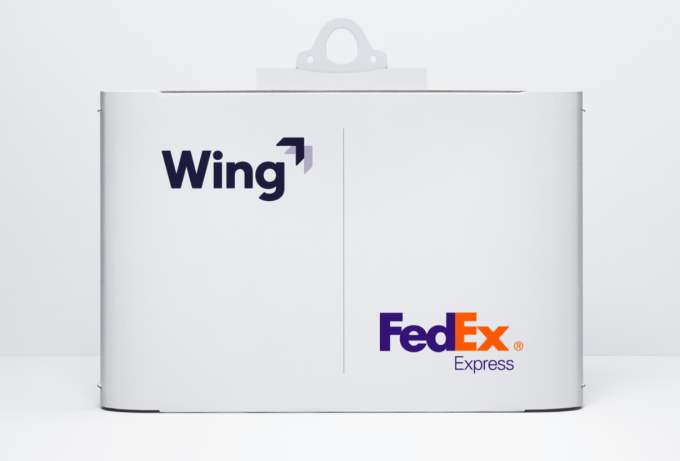
Wing says its drone can currently handle a payload of about 3 lbs, with the drone itself weighing roughly 10 lbs.
Wing won&t charge pilot program customers for delivery; customers will pay the storesticker price, and delivery during this test phase will be free.
Wing says the first deliveries should start next month.
- Details
- Category: Technology
Read more: Wing will test drone delivery in the US with Walgreens and FedEx
Write comment (97 Comments)YouTube verification program is getting a massive overhaul, the company announced today, which will likely result in a number of less prominent creators losing their verification status. Previously, YouTube allowed any channel that reached 100,000 subscribers to request verification. That limit is being removed, with a change to the verification program that rolls out in October. Going forward, YouTube will focus its efforts on verifying channels that have more of a need to prove their authenticity — like those belonging to a brand, public figure, artist or another creator who might be subject to impersonation, for example.
YouTube says the earlier verification system was established when the site was smaller, but its ecosystem has since grown and &become more complex.&
Instead of looking at a number of subscribers — a metric than can be gamed by bots — the new system will have more murky requirements. YouTube says itabout &prominence,& which it defines in a number of ways.
For starters, YouTube will determine if the channel represents a &well-known or highly searched for creator, artist, public figure or company.& It will also consider if the channel is widely recognized outside of YouTube and has a strong online presence, or if ita channel that has a very similar name to many other channels.
We understand YouTube will use a combination of human curation and algorithmic signals to make these determinations. When asked, the company declined to discuss the specifics, however.

There were several reasons YouTube wanted to change its system, beyond raising the threshold for verification.
The company had run into a similar problem that Twitter once faced — people mistook the verification badge as an endorsement. On Twitter, that issue reached a tipping point when it was discovered that Twitter had verified the Charlottesville rally organizer. Twitter stopped verifying accounts shortly afterward. Its system today is still being fixed, but the project has been put on the back burner.
Similarly, YouTuberesearch found that over 30% of users misunderstood the verification badgemeaning, believing the checkmark indicted &endorsement of content,& not &identity.&
This is problematic for YouTube for a number of reasons, but mainly because the company wants to distance itself from the content on its platform — content that is often racist, vile, false, dangerous, conspiracy-filled and extremist. YouTube wants to be an open site, with all the troubles that entails, but doesn&t want to be held accountable for the terrible things posted there — like the 14-year-old girl who grew to online fame by posting racist, anti-Muslim, anti-LGBTQ videos, or the high-profile star who made repeated racist comments, then gets honored by YouTube with special creator rewards.
There were other issues with the prior system, as well.
Some creators would fake their verification status, for instance. Before the changes, a verified channel would display a checkmark next to its channel name. This could be easily forged by simply adding a checkmark to the end of a channel name.
Plus, the checkmark itself only really worked when people viewed the channelmain watch page on desktop or mobile. It didn&t translate as well to interactions in live chats, on community posts or in stories.

By revamping the verification system, YouTube is clarifying that the verification isn&t an endorsement — ita neutral statement of fact. Italso less difficult to forge, and works everywhere the creator interacts with fans.
The updated verification system drops the checkmark in favor of a gray swipe across the channel name (see above).
This applies to both channels and artists. With regards to the latter, it will replace the music note.
The system will roll out in late October, YouTube said, and the new criteria will apply for all channels.
Those who meet the new requirements won&t need to apply — they&ll automatically receive the new verified treatment. Others who didn&t qualify for re-verification will be notified today and will have the option to appeal the decision before the changes take place.
Information on the appeals process will be available in YouTubeHelp Center.
Update, 9/19/19, 1:26 PM ET: Herethe letter YouTube creators are receiving. Note it refers to a timeframe of &early& instead of &late& October for the changes.
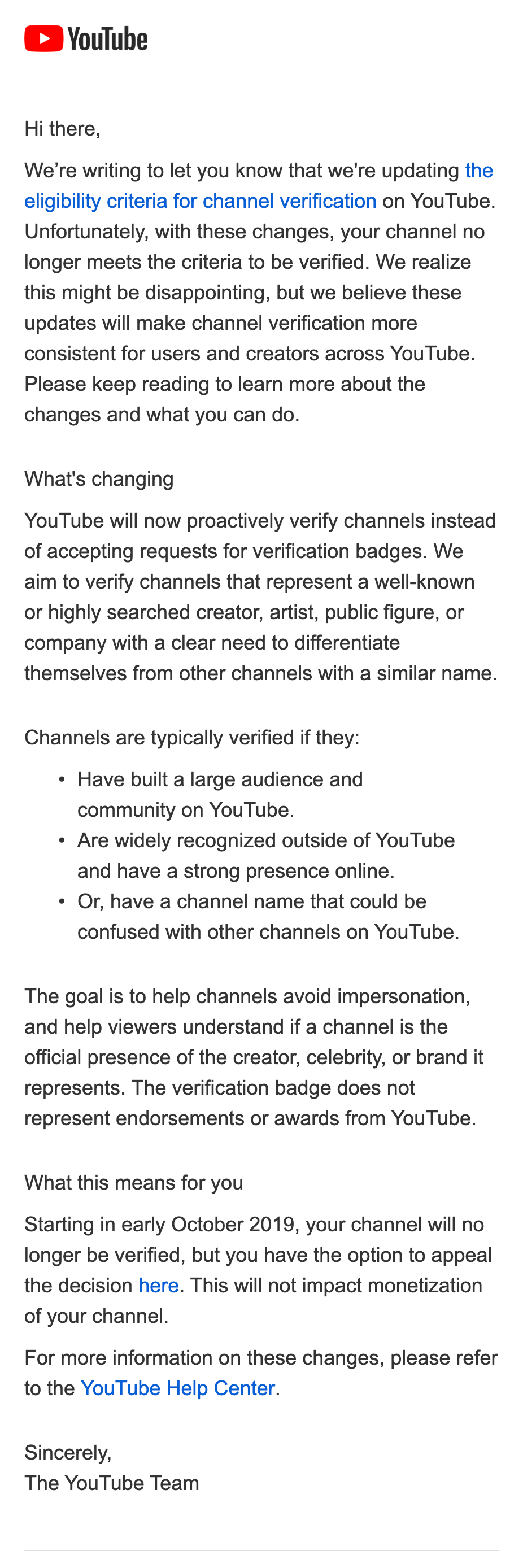
Herethe email if you stay verified (thanks @thiojoe) &
- Details
- Category: Technology
Read more: YouTube overhauls its problematic verification program
Write comment (98 Comments)
Automattic, the company behind WordPress.com, WooCommerce, Longreads, Simplenote and soon Tumblr, is now worth $3 billion. But its founder and CEO Matt Mullenweg has a bigger goal. He wants to make the web better, more open and diverse.
With the rise of social networks and closed platforms, Automattic mission statement has never sounded so important. Automattic doesn&t want to be the hot new startup. It wants to build a strong foundation to empower content creators for decades to come.
In an interview this week, Matt Mullenweg discussed why he raised $300 million from Salesforce Ventures, what he thinks of the current state of the web and how Automattic has a shot at building the open-source operating system of the web. The interview was edited for clarity and brevity.
(Photo Credit: Christopher Michel / Flickr under a CC BY 2.0 license)
Romain Dillet: Tell me more about how much money you&ve raised, who you&ve raised from.
- Details
- Category: Technology
Read more: How Automattic wants to build the operating system of the web
Write comment (98 Comments)Page 847 of 5614

 9
9





